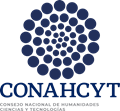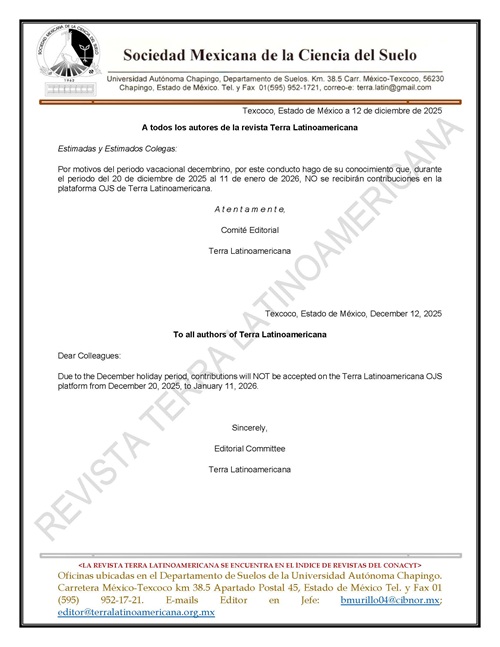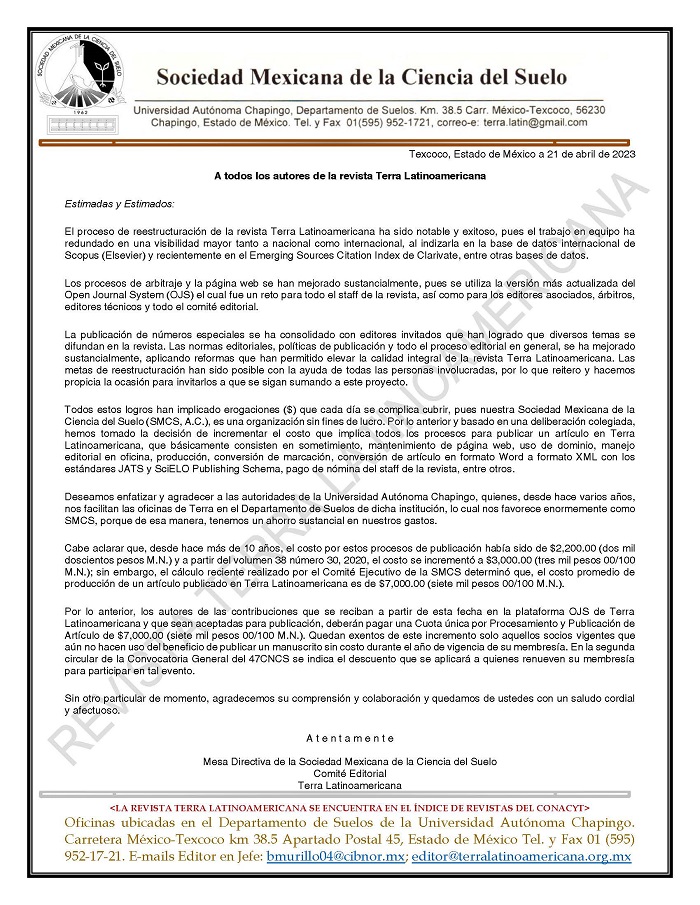"Assessment of the soil quality of Tabasco, Mexico using conventional methods, near-infrared spectroscopy and chemometrics
DOI:
https://doi.org/10.28940/terra.v41i0.1616Keywords:
soil degradation, granulometry, organic matter, PLS-DA classification modelAbstract
A retrospective–prospective research was carried out to establish a soil quality index (SQI) of Los Rios region (RR), Tabasco, Mexico, and its modeling with the near infrared technology (NIR) and chemometrics. The SQI was determined with the OM / (clay + silt) relationship to evaluate the Cambisol soils of RR. The OM percentage and the SQI were compared to define the best soil quality qualifier. Based on the SQI, 58% of the soils in RR exhibit degradation, while only 14% indicates a low concentration of OM. Therefore, we conclude that the SQI is more sensitive to quantify soil degradation compared to the evaluation based on OM. A sustainable soil management program and soil practices adapted to local environmental, social and economic conditions are recommended to increase OM and improve SQI. With the SQI, a classification model was established using near-infrared spectroscopy and chemometrics. The spectra of each soil sample were recorded and through chemometric interpretation, it was shown that it is possible to conduct a partial least squares discriminant analysis model (PLS-DA) to predict the SQI. The model meets all statistical qualifiers and correctly predicts the SQI in 100% of cases. We conclude that the NIR technology provides suf ficient information to predict the SQI with the advantage of eliminating the consumption of reagents, no laboratory waste is generated, the analysis time is reduced to minutes, and the sample under study is not destroyed. In addition, the procedure is simple as it consists of drying, grinding and sieving the soil samples to assess the structural quality of the soil.
Downloads
Publication Facts
Reviewer profiles N/A
Author statements
- Academic society
- Terra Latinoamericana
- Publisher
- Mexican Society of Soil Science, C.A.

















